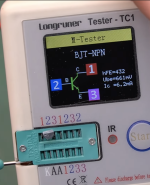joelorigo
Well-known member
I bought the Aberration Fuzz in the sale this Weekend and have a couple questions.
1. I assume the board is designed to fit in a Tayda 3 knob 125B, yeah?
2. I have some BC109 transistors, can that be substituted for the BC107B listed in the BOM?
3. For the MP38A, I found these on eBay that one person on this forum had a good experience with:

Where else could I try to find them? Are there any substitutes to try?
The BOM says hFE ~80, leakage 0.195mA. What device measures the leakage? I have seen the TC1 as a good tester but it doesn't do leakage, right?
1. I assume the board is designed to fit in a Tayda 3 knob 125B, yeah?
2. I have some BC109 transistors, can that be substituted for the BC107B listed in the BOM?
3. For the MP38A, I found these on eBay that one person on this forum had a good experience with:

6pcs Germanium Transistor NPN MP38A ~ 2SD195, 2SD33, OC75 Tone Bender USSR | eBay
Similar to the 2SD195, 2SD33, OC75, 107NU70. Power dissipation 0.15W. Maximum temperature 85°C. Forward current transfer ratio (hFE) 45-100. Collector capacitance 50pF.
www.ebay.com
Where else could I try to find them? Are there any substitutes to try?
The BOM says hFE ~80, leakage 0.195mA. What device measures the leakage? I have seen the TC1 as a good tester but it doesn't do leakage, right?



